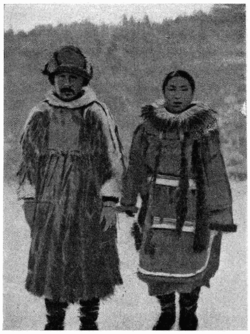
La ropa (también conocida como ropa , prenda , vestido , indumentaria o atuendo ) es cualquier artículo que se lleva en el cuerpo . Normalmente, la ropa está hecha de telas o textiles , pero con el tiempo se han incluido prendas hechas de piel de animal y otras finas láminas de materiales y productos naturales que se encuentran en el medio ambiente, unidos. El uso de ropa está restringido principalmente a los seres humanos y es una característica de todas las sociedades humanas. La cantidad y el tipo de ropa que se usa depende del género, el tipo de cuerpo, los factores sociales y las consideraciones geográficas. Las prendas cubren el cuerpo, el calzado cubre los pies, los guantes cubren las manos, mientras que los sombreros y tocados cubren la cabeza y la ropa interior cubre las partes íntimas .
La ropa también tiene importantes factores sociales. Usar ropa es una norma social variable . Puede connotar modestia . Ser privado de ropa delante de otros puede resultar vergonzoso . En muchas partes del mundo, no usar ropa en público que deje visibles los genitales , los senos o las nalgas podría considerarse exposición indecente . El área púbica o la cobertura genital es el mínimo que se encuentra con mayor frecuencia en todas las culturas e independientemente del clima, lo que implica la convención social como base de las costumbres. La ropa también puede usarse para comunicar estatus social, riqueza, identidad de grupo e individualismo. ( Articulo completo... )
Textil es un término general que incluye diversos materiales a base de fibras , incluidas fibras, hilados , filamentos , hilos , diferentes tipos de telas, etc. Al principio, la palabra "textiles" solo se refería a telas tejidas . Sin embargo, el tejido no es el único método de fabricación, y posteriormente se desarrollaron muchos otros métodos para formar estructuras textiles en función de su uso previsto. El tejido y el no tejido son otros tipos populares de fabricación de tejidos. En el mundo contemporáneo, los textiles satisfacen las necesidades materiales para aplicaciones versátiles, desde simples prendas de uso diario hasta chalecos antibalas , trajes espaciales y batas de médico . ( Articulo completo... )
Las artes textiles son artes y artesanías que utilizan fibras vegetales , animales o sintéticas para construir objetos prácticos o decorativos. ( Articulo completo... )





.jpg/440px-Finlaysonin_kutojia_vuonna_1951._Kuva_Veikko_Kanninen,_Vapriikin_kuva-arkisto._(16248493129).jpg)

_by_Emperor_Huizong.jpg/440px-Court_ladies_pounding_silk_from_a_painting_(捣练图)_by_Emperor_Huizong.jpg)
,_shawl,_Ixil_Maya,_Nebaj,_mid_to_late_20th_century,_cotton_-_Textile_Museum_of_Canada_-_DSC01351.JPG/440px-Huipil,_skirt,_belt_(c.1950),_shawl,_Ixil_Maya,_Nebaj,_mid_to_late_20th_century,_cotton_-_Textile_Museum_of_Canada_-_DSC01351.JPG)



Point de Venise (también Gros Point de Venise ) es un encaje de aguja veneciano del siglo XVII caracterizado por patrones florales en volutas con motivos florales adicionales trabajados en relieve (en contraste con los diseños geométricos de la reticella anterior ).

Proyecto Wiki de Artes Textiles
WikiProject Moda • WikiProject Nudos • WikiProject Escultura • WikiProject Artes visuales
¿Qué son los WikiProyectos ?
Los siguientes proyectos hermanos de la Fundación Wikimedia brindan más información sobre este tema: